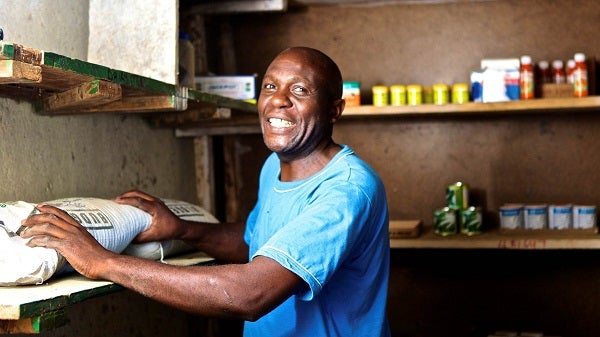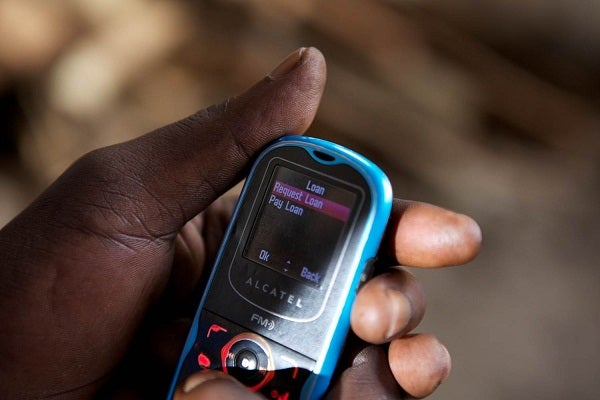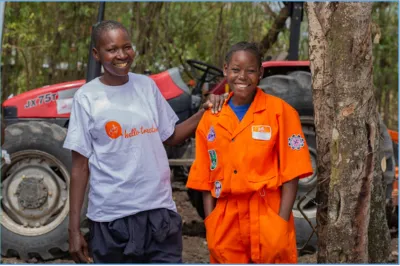When Saving for Tomorrow Necessitates Borrowing for Today
The Kenya Financial Diaries was led by researchers at Digital Divide Data and Bankable Frontier Associates and funded by Financial Sector Deepening (FSD) of Kenya and the Bill & Melinda Gates Foundation via the GAFIS project. One of the largest studies of its kind, the project tracked the detailed cash flows of 300 low-income families for a full year, shedding new light on how the poor manage money in the context of a vibrant, dynamic financial service market. This is the second post in a two-part series. Read the first.
Poor households in the Kenya Financial Diaries tried to accomplish two fundamental money management goals: 1) ensure enough short-term liquidity to build elasticity into their budgets, and 2) enable longer-term investment. The trouble is that when you are poor, there is usually not enough money to do both well at the same time.
One might think that the poor prioritize liquidity first. After all, that is how you can be sure you are able to meet your most immediate needs. But we actually observed that many prioritized tying their savings up in financial devices that would enable investment. That is how you get out of poverty and secure a longer term future.

Photo Credit: FSD Kenya
Most of our respondent households were saving more than they were borrowing. At the median, this translated into about 39 days’ worth of income in savings versus about 16 days’ worth of income in debt. Most of this saving was quite intentionally pushed into financial assets—like savings groups—where it could not be immediately withdrawn. These kinds of devices are playing an important role in the portfolio, helping money build up into useful, investible sums. And, most of the time, they are also playing an auxiliary function. This money, our respondents told us, is not just sitting there – it is working. While the respondents have a future claim on those funds, they serve another purpose in the immediate, such as enabling a loans or enabling a friend or neighbor to invest today. Money that just sits around idle under the mattress—even in a bank account—is seen as wasted.
When we roughly designated—and quite conservatively—financial devices as liquid or illiquid along the lines of how respondents are able to use them, we found that only about 9% of the value on respondents’ balance sheets was actually liquid.
 A customer uses MShwari on a cell phone
A customer uses MShwari on a cell phone
Photo Credit: FSD Kenya
This is good news for investment, even though the payouts from rotating savings and credit associations are typically small at just KSh 1,500, or $18, on average. But it also means that few families have a substantial pool of liquid savings to draw on to smooth consumption or meet new needs—even small ones—when they emerge. As a result, they are sometimes forced to forgo important expenditures, even when there is “savings” on the balance sheet. Their children were sent home from school because of outstanding debts. They went hungry. They postponed or forwent medical care altogether.
This was often for want of very small bits of liquidity, even relative to incomes:
- KSh 10 (0.2% of monthly income) – Catherine was sick with a high fever and a headache, but her father could not afford to take her to the hospital. Instead, he borrowed KSh 10 from a friend and bought her Mara Moja (an over-the-counter painkiller).
- KSh 70 (1.7% of monthly income) – Christine needed KSh 70 for the medication fee to treat her malaria, but she didn’t have the money and postponed treatment for two weeks. Her son developed malaria as well in the meantime, bringing the total medication cost to KSh 150 when the two were finally treated.
- KSh 500 (5% of monthly income) – Samuel fell ill and went to hospital in Mathare. His mother gave him KSh 500, but this only covered the transport and consultation. He was not able to buy the drugs prescribed and still had the prescription with him when our team visited a week later.
For urgent needs like these, being able to quickly borrow enough to get through the immediate need would be incredibly useful. Hence the appeal of M-Shwari, the combined savings and loan product introduced by M-PESA and CBA in 2013. Some have questioned the value of M-Shwari given its short loan term of just 30 days and high cost (a fee of 7.5% of the loan value is charged when the loan is taken and after 30 days on the outstanding balance if the loan is rolled over). But our respondents told us that the loan feature is incredibly valuable and as we understood their cash flow constraints better, it became clear why.
M-Shwari is solving a real need and might do so even better if it could enhance the savings side of the product and make customers feel that their money is at work when it is earning interest in a bank account. Might other products follow suit, better connecting with the liquidity and investment needs of the poor?
Learn more about the Kenyan Financial Diaries Project on September 9 at a presentation from Julie Zollman, Senior Associate at Bankable Frontier Associates, at CGAP Headquarters. Register in advance to attend.



Comments
Great post Julie. I'm
Great post Julie. I'm interested in details on the point about families using M-Shwari for emergency needs. Do you know how many in your sample were using M-Shwari in this way, for emergency liquidity needs, and not for consumption purposes? It's something I've been wondering about from conversations with M-Shwari users and wondered if you have a breakdown of percent in your sample using M-Shwari for loans, and for emergency not discretionary consumption purposes.
Yes, this is a fascinating
Yes, this is a fascinating post, Julie - the more we find out about how people actually behave, the more it becomes clear how important tailored solutions are. There are interesting parallels, and interesting differences, with China, where research by Malhar Nabar showed that urban households save with a specific target level of savings in mind. This has the very unusual result that as deposit interest rates fall, households find it more difficult to reach the target and allocate a higher proportion of household income to savings (and vice versa when rates rise). So in urban China a way to reduce savings and increase consumption would be to increase deposit rates! ('Targets, Interest Rates, and Household Saving in Urban China,' IMF Working Paper WP/11/23, 2011). A different dynamic seems to be at work in Kenya, with a less formulaic and more functional determination of how much to save, with different implications for interest rates. Another demonstration that one size does not fit all in the policy sphere.
Sound like a good article for
Sound like a good article for the topic. Would really like to know the scope, format and approach of the study, for better formulation of possible of viable banking solutions and products. Do we know the geographical dispersion of the respondents in the sample, and also the rural/urban percentages involved?
Julie, what a great read!
Julie, what a great read! This financial diaries project is the most interesting household research that I've read in a long time. The M-Shwari findings demonstrate that really small bits of credit can be important in a pinch too. Or just to make convenient purchases. On savings with M-Shwari, CBA has launched a fixed-deposit product/pocket and it will be interesting to see if it is really utilized. I can see how M-Shwari's quick-access credit facility could make customers more comfortable with tying up savings in the pocket (requiring 48-hrs notice for withdrawals). But, I wonder if the pocket's return of 2-5% p.a. pushes the needle on savings - or if M-Shwari continues to be regarded & used as a credit tool in Kenya... Thanks for keeping us thinking!
Add new comment